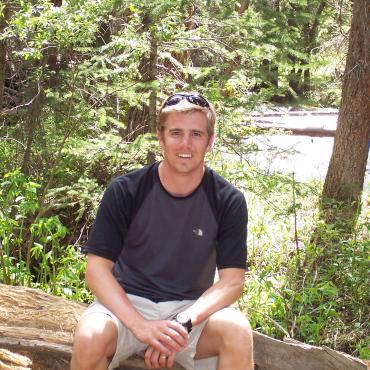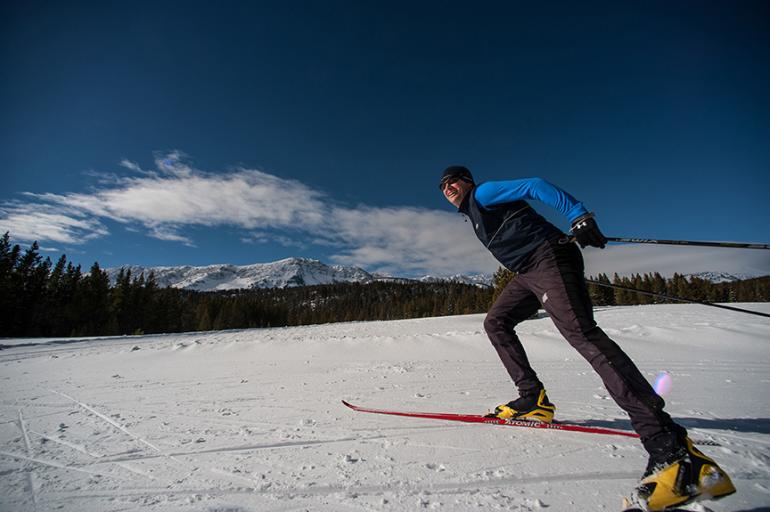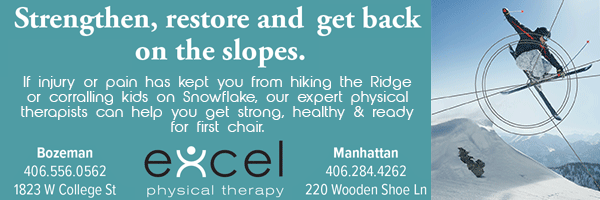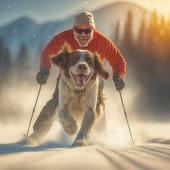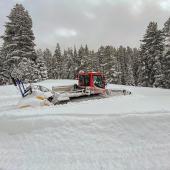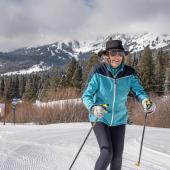Nordic Strong
Injury prevention in cross-country skiing.
Nordic skiing is a great way to enjoy the outdoors in winter, and while it has a comparatively low injury rate, overuse injuries can occur, due to repetitive stress. These injuries are preventable, however, through proper training. Here are some tips to consider.
Technique
The most common underlying cause of an overuse injury is training error—typically doing too much too soon. Ease into your season, and don’t try and hammer out 30k your first time out. Furthermore, technique is extremely important, not only for efficiency and performance, but also to decrease undue stress on your body. Working on your technique through various drills can go a long way toward a successful season. If you need help, take a lesson at a local Nordic center or sign up for training through the Bridger Ski Foundation.
Lower-Back Pain
Lower-back pain is relatively common in cross-country skiers, especially in skate skiers and competitive classic skiers because of the repetitive flexion-extension loading pattern of double-poling. In addition to sound technique, adequate abdominal, hip, and spinal-extensor strength is essential. Furthermore, improving hip flexibility decreases the rate of lower back pain. Hip-flexor flexibility is especially important, so make sure to incorporate hip-flexor stretching as part of your normal routine.
Knee Pain
Patellofemoral pain, or anterior knee pain, is the most common type of knee pain in Nordic skiing. Repetitive stress to the soft tissue around the patella (kneecap) occurs due to poor tracking of the patella in the femoral groove. This poor tracking can be the result of hip weakness, causing poor control of movement of the femur (thigh bone), poor stabilization from the foot and ankle, and poor skiing technique.
Typically, poor tracking of the patella is caused by a combination of the factors mentioned above, all of which result in a collapsing of the knee inward on the stance leg. Proper strength and conditioning of the hips along with working on proper single leg squat form can help prevent this from occurring. Additionally, working on your balance and getting orthotics for your ski boots will help prevent the development of patellofemoral pain. If you need guidance for a proper strength and conditioning program, or need custom orthotics for your boots, contact your physical therapist.
Elbow & Shoulder Pain
Due to the repetitive stress from poling, Nordic skiers can develop overuse injuries of both the elbow and shoulder. The most common of these are medial epicondylitis and shoulder-impingement syndrome. The underlying cause of these injuries is poor poling technique, incorrect pole length, and poor strength and conditioning.
Shoulder-impingement syndrome is caused by weakness of the rotator cuff and muscles around the shoulder blade. To prevent this, incorporate strength and conditioning of your rotator cuff and periscapular musculature. Medial epicondylitis is an irritation of the wrist flexors tendon and presents as pain on the inside of the elbow. To prevent medial epicondylitis, work on poling technique and forearm strength.
Jason Lunden works at Excel Physical Therapy in Bozeman. For more information on injury prevention, check out his blog at excelptmt.com.

